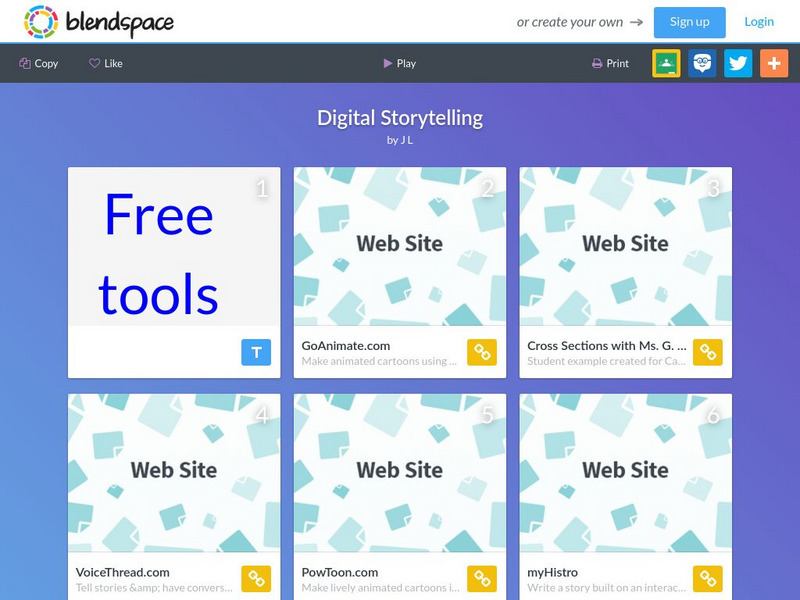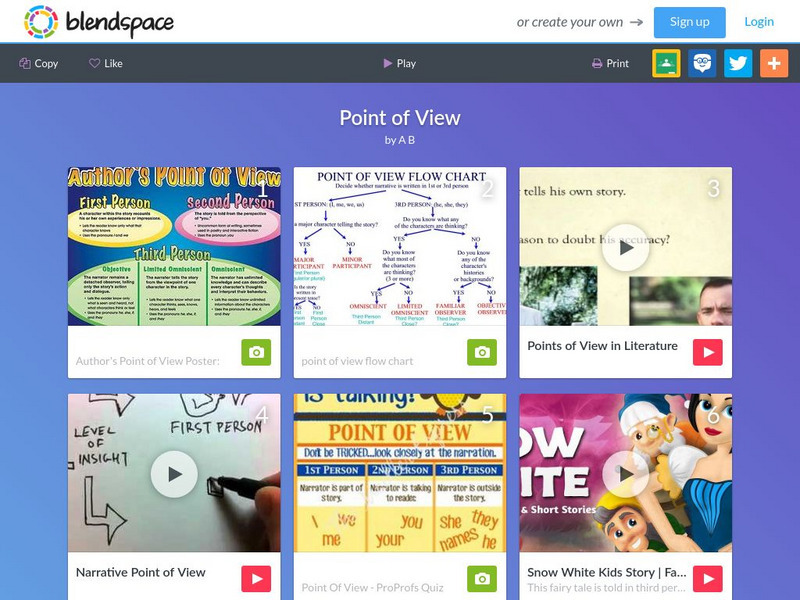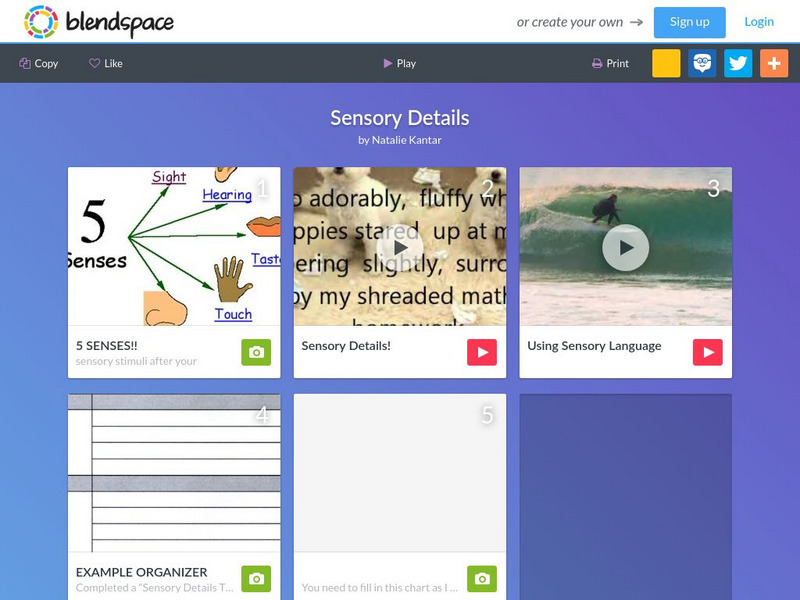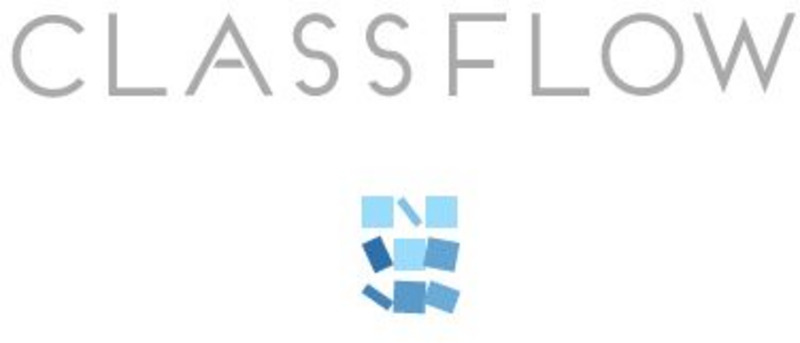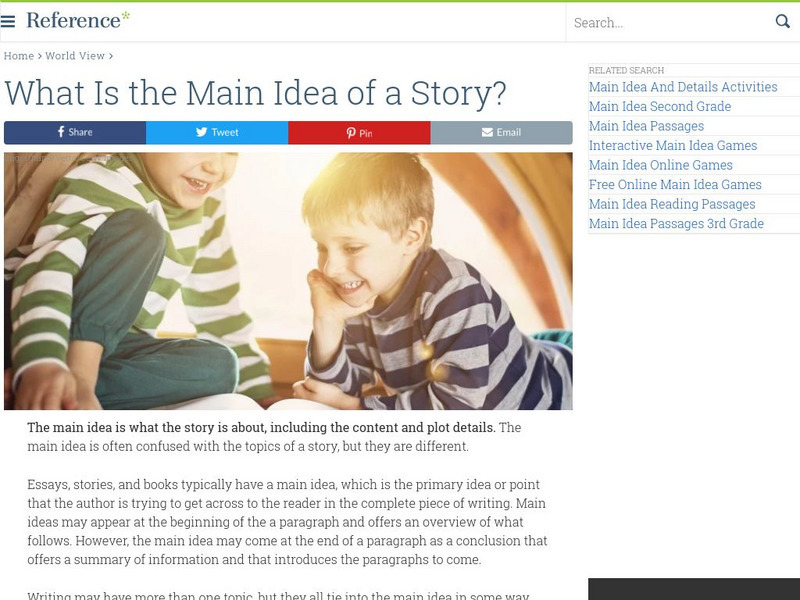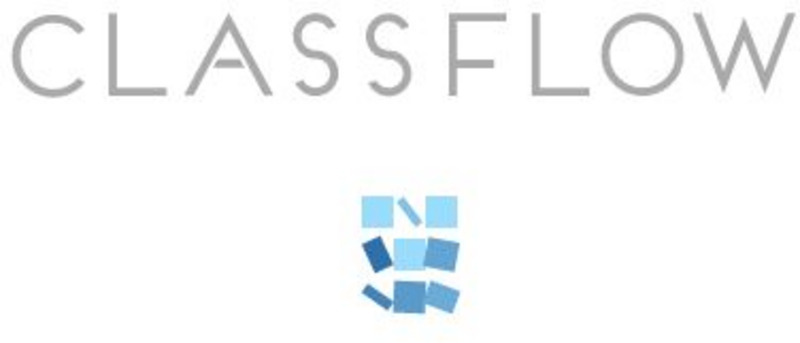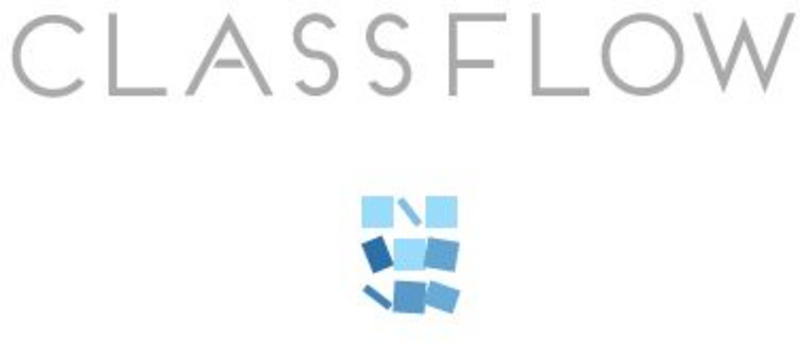Hi, what do you want to do?
Other
Sanchezclass.com: Four Types of Writing
Definitions of the four types of writing: narrative, expository, persuasive, and descriptive.
British Council
Learn English Kids: Story Maker
This site is a story maker; students choose from three types of stories: fairy tale, horror story, or science fiction. They follow the directions choosing from pictures and typing in words. Then the complete story is finished and they...
Quia
Quia: Narrative Structure Elements
This reading resource provides vocabulary words with definitions. All words are related to the elements of narratives. A link to associated review activities is included.
Quia
Quia: Compare and Contrast Stories
This interactive assessment engages students in comparing and contrasting two literary text passages. Students will read two short passages and answer five questions that require students to compare and contrast the content of each story.
Quia
Quia: Point of View Quiz
Read each passage and determine if it is written in first, second, or third person point of view in this five question quiz.
Quia
Quia: Point of View Millionaire Game
Read a short text and then determine whether it is written in first person, third person, third person limited, or third person omniscient point of view in this Rags to Riches style game.
Other
Katie Kazoo: The Five Essential Elements of a Story [Pdf]
Learn the five essential elements of a story.
Other
Cyberwriter: Descriptive Writing
Resource gives writing activities leveled K-1st grade, 2nd & 3rd grades and 4th through 8th grades.
Curated OER
Mc Graw Hill: Informational Text: Compare Text Structures
This learning module focuses on comparing organizational patterns in informational texts including chronological order, compare and contrast, cause and effect, and problem and solutions. Click on each text structure for an explanation.
Scholastic
Scholastic: Informational Text: Reading Response: Compare and Contrast
A brief graphic organizer to help students visualize the similarities and differences in a piece of informational text.
Quia
Quia: Point of View Quiz
This interactive activity assesses students' understanding of point of view. Students will read five brief narrative passages; after reading each passage, students will identify the point of view.
ReadWriteThink
Read Write Think: Compare and Contrast Rubric
Students and teachers can assess their own writing with this compare and contrast rubric.
TES Global
Blendspace: Digital Storytelling
Links to eight different online storytelling websites available for free student use followed by an assessment.
TES Global
Blendspace: Point of View
A learning module with six links to videos and charts that demonstrate first, second, third limited, and third omniscient points of view.
TES Global
Blendspace: 4th Grade: Firsthand and Secondhand Accounts
A five-part learning module with links to an image, videos, and websites about comparing first and second hand accounts.
TES Global
Blendspace: Sensory Details
A five-part learning module with links to images and videos about sensory details and using sensory language.
TES Global
Blendspace: Narrative Writing
An eighteen-part learning module with links to images and websites to use while learning to write a narrative text.
TES Global
Blendspace: Point of View
A fifteen-part learning module with links to images, web sites, videos, and texts about first and third person point of view.
Tom Richey
Slide Share Compare and Contrast
A slide show with ten slides designed to build skills in comparing, contrasting, and using Venn diagrams.
ClassFlow
Class Flow: Reading in the Content Area
[Free Registration/Login Required] This flipchart integrates the reading skill of compare and contrast while learning about the solar system.
Other
Reference: What Is the Main Idea of a Story
This reference page defines the main idea of a story and explains how it differs from topics of a story.
ClassFlow
Class Flow: Alike? Different? Compare and Contrast
[Free Registration/Login Required] This flipchart contains numerous interactive activities. The flipchart introduces students to the concept of comparison and contrast, how it relates to real life, how it is used by authors, and signal...
ClassFlow
Class Flow: Can You Tell?
[Free Registration/Login Required] This flipchart helps students to determine the difference between narrative and expository writing.
ClassFlow
Class Flow: Character Analysis
[Free Registration/Login Required] This elementary flipchart uses examples from children's literature to explore character. It includes writing activities and challenges children to think from the character's point of view.





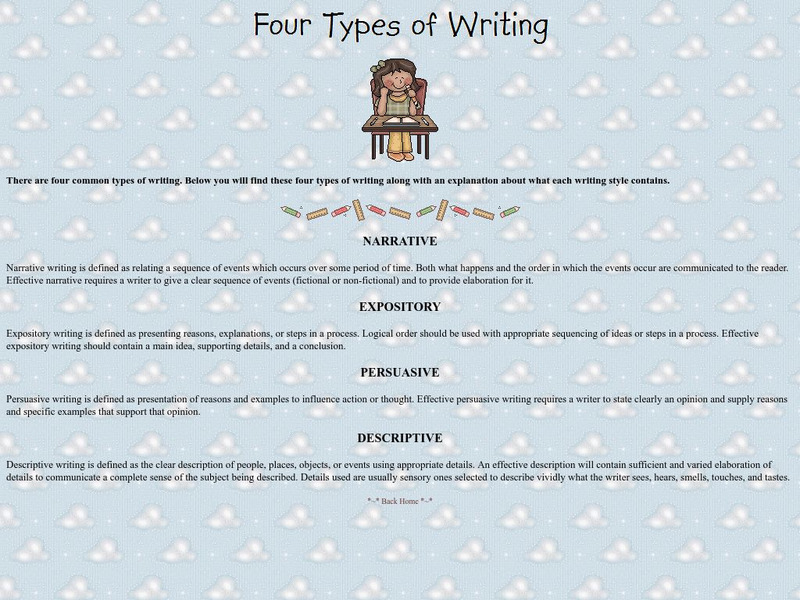
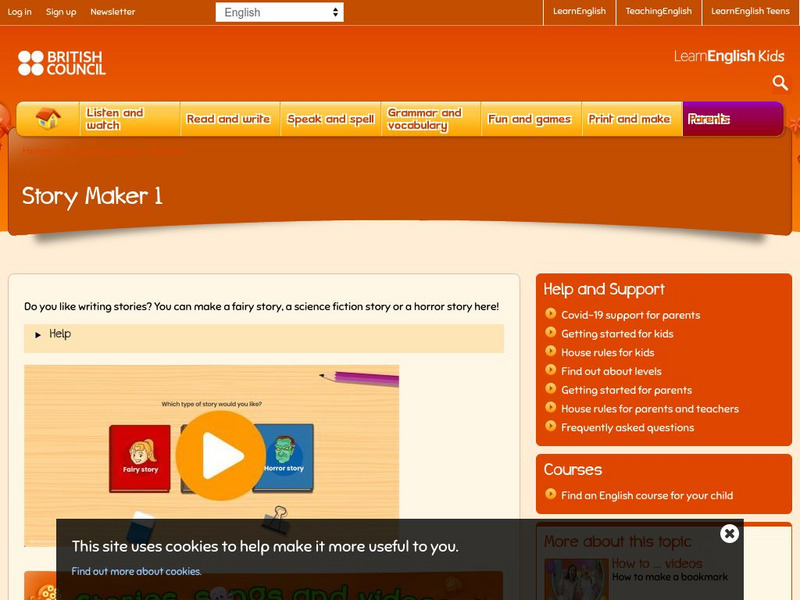


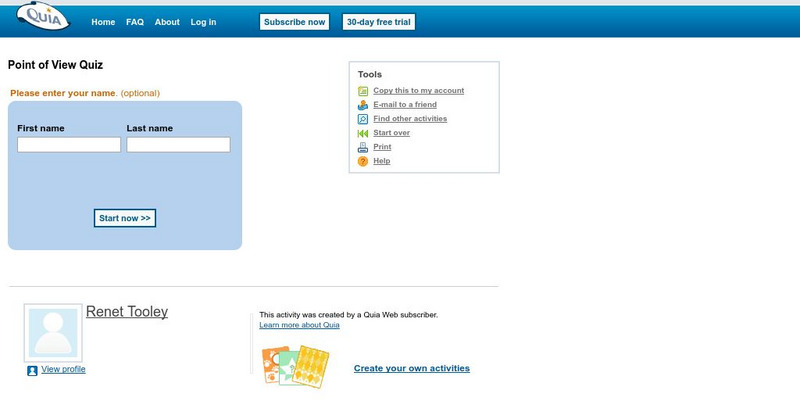

![Katie Kazoo: The Five Essential Elements of a Story [Pdf] Handout Katie Kazoo: The Five Essential Elements of a Story [Pdf] Handout](https://static.lp.lexp.cloud/images/attachment_defaults/resource/large/FPO-knovation.png)



